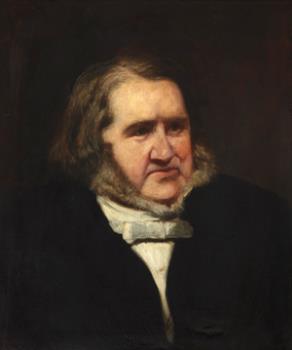- James Young Simpson (1811-1870)
- ED.CS.2010.202
- Simpson, James Young (1811-1870). Portrait. Oil on canvas, framed. n.d. Artist: Unknown. James Simpson was born in Bathgate, West Lothian, the seventh son of a baker. He was educated at the local school and went to Edinburgh University at the age of 14. Too young to graduate, he became a Licentiate of the College in 1830 before graduating in 1832. He became Professor of Midwifery at Edinburgh University in 1840, Physician to Queen Victoria in 1847, President of the Royal College of Physicians in 1850 and Baronet in 1866. A man of enormous energy and great personal charm, Simpson was a keen conversationalist and much loved physician. His contributions to obstetrics are overshadowed by his discovery of the anaesthetic effects of chloroform in November 1847. After ether was discovered in 1846, Simpson was quick to use it to relieve the pains of labour, earning the gratitude of countless women and the condemnation of some members of the church and the medical profession. Simpson was a doughty advocate of the cause of general anaesthesia and his final vindication came when Queen Victoria had chloroform at the birth of Prince Leopold in 1853 ('chloroform a la reine'). He made many valuable contributions to the advancement of midwifery both by the invention of new instruments and the introduction of new methods. In 1844 he opened a Dispensary for Women and Children in St John Street, Edinburgh and, over the next three years, 7617 patients were registered. He achieved world-wide fame and visitors from all over the world came to see him at his home in 52 Queen Street. Apart from his medical interests, Simpson was a keen antiquarian and published three volumes on archeological subjects.
Height: Framed 75 cm
Width: 65 cm
Height: Canvas 59.4 cm










